Hans Hofmann’s Catalogue Raisonne with Collection Manager, Stacey Gershon
by leslierankowfinearts
IN SEPTEMBER 2014, THE HANS HOFMANN FOUNDATION REALIZED AN AMBITIOUS AND IMPORTANT GOAL : THE PUBLICATION OF THE CATALOGUE RAISONNE OF HOFMANN’S PAINTINGS. THIS COMPREHENSIVE 3- VOLUME WORK DOCUMENTS 1702 PAINTINGS AND INCLUDES ENTRIES FOR EACH WORK WITH COMPLETE DESCRIPTIVE INFORMATION AND DETAILED HISTORIES OF OWNERSHIP, EXHIBITION HISTORY AND LITERATURE AND INCLUDES FIVE SCHOLARLY ESSAYS. EVERY CATALOGUE RAISONNE DEMANDS ENORMOUS DEDICATION AND COMMITMENT ON THE PART OF ITS CONTRIBUTORS AND GIVEN THE SCALE OF OUTPUT OF HOFMANN’S WORK, THIS CATALOGUE REPRESENTS A PARTICULARLY IMPRESSIVE ACHIEVEMENT.
http://www.hanshofmann.org/catalogueraisonne/
FOUNDED IN 1994, THE CATALOGUE RAISONNE SCHOLARS ASSOCIATION WAS ESTABLISHED TO SUPPORT THE INTERESTS OF SCHOLARS AND ART HISTORIANS ENGAGED IN THESE ONGOING PROJECTS. THIS ORGANIZATION’S PRESENCE IN THE ART WORLD UNDERLINES THE IMPORTANCE AND SCOPE OF THIS CURATORIAL PROCESS. TYPICALLY, A CATALOGUE RAISONNE DEDICATED TO A SINGLE ARTIST’S BODY OF WORK PROVIDES COLLECTORS, MUSEUM CURATORS AND DEALERS WITH A RELIABLE LIST OF AUTHENTIC WORKS, THEIR CHRONOLOGY AND HISTORY (USUALLY INCLUDING PROVENANCE, BIBLIOGRAPHY AND EXHIBITIONS).
WITH A BODY OF WORK THAT NUMBERS IN THE 1700 RANGE FOR THE PAINTINGS ALONE, STACEY GERSHON’S ROLE IN THE PUBLICATION OF THE CATALOGUE RAISONNE AND AS THE COLLECTION’S MANAGER SIGNIFIES BOTH AN ENORMOUS RESPONSIBILITY AND HER DEEP KNOWLEDGE NOT ONLY OF HANS HOFMANN SPECIFICALLY BUT ALSO OF THE CURATORIAL PROCESS IN GENERAL.
STACEY, THANK YOU SO MUCH FOR YOUR CONTRIBUTION TO THE LRFA BLOG.
BEFORE WE EXPLORE THE WORKINGS OF THE FOUNDATION, WHAT IS HOFMANN’S BIOGRAPHICAL HISTORY?
Hans Hofmann is one of the most important figures of postwar American art. Celebrated for his exuberant, color-filled canvases, and renowned as an influential teacher for generations of artists—first in his native Germany, then in New York and Provincetown—Hofmann played a pivotal role in the development of Abstract Expressionism.
From c. 1900 until c. 1930, Hofmann’s early studies, decades of painting, and schools of art took him to Munich, to Paris, then back to Munich. By 1933, and for the next four decades, he lived in New York and in Provincetown. Hofmann’s evolution from foremost modern art teacher to pivotal modern artist brought him into contact with many of the leading artists, critics, and dealers of the twentieth century: Matisse, Picasso, Braque, Kandinsky, Sonia and Robert Delauney, Betty Parsons, Peggy Guggenheim, Lee Krasner, Jackson Pollock, and many others. His successful career was shepherded by the postwar modern art dealer Sam Kootz, secured by the art historian and critic Clement Greenberg, and anchored by the professional and personal support of his first wife, Maria “Miz” Hofmann (1885–1963).
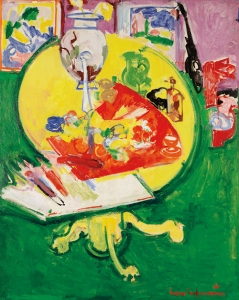
Still Life—Yellow Table on Green, 1936
Oil on panel
60 x 47 1/2 in. (152.4 x 120.7 cm)
Dallas Museum of Art. Fractional gift of The Rachofsky Collection in honor of Dr. Dorothy Kosinski, the Barbara Thomas Lemmon curator of European Art (2001.344)
Photography courtesy of Dallas Museum of Art
Already 64 at the time of his first solo exhibition at Art of This Century in New York in 1944, Hofmann balanced the demands of teaching and painting until he closed his school in 1956. Doing so enabled him to renew focus on his own painting during the heyday of Abstract Expressionism and, for the next twenty years, Hofmann’s voluminous output—powerfully influenced by Matisse’s color and Cubism’s displacement of form—developed into an artistic approach and theory he called “push and pull,” which he described as interdependent relationships between form, color, and space. From his early landscapes of the 1930s, through his “slab” paintings of the later 1950s, and in his abstract works at the end of his career upon his death in 1966, Hofmann continued to create boldly experimental color combinations and formal contrasts that transcended genre and style.
WHAT ARE YOUR RESPONSIBILITIES AS COLLECTION MANAGER?
Keeping track of where the works are: consignment, exhibition, conservation. I’ve been assisting in organizing exhibitions – the one at the Bruce Museum in Greenwich, Connecticut: Hans Hofmann: Walls of Color; the exhibition at the MPK in Germany last year and promoting Hofmann with other curators and/or finding venues for other exhibitions as well. I also curated an exhibition with Debbie Davis, a colleague at Lori Bookstein Fine Art, on the legacy of Hofmann on younger artists who’ve had no direct contact with him. It’s amazing to me how many contemporary artists have been influenced by Hofmann indirectly.
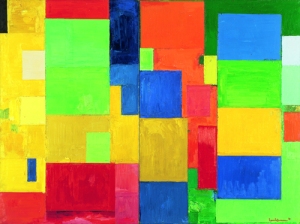
Combinable Wall I and II, 1961
Oil on canvas
84 1/2 x 112 1/2 in. (214.6 x 285.8 cm)
University of California, Berkeley Art Museum & Pacific Film Archive.
HANS HOFMANN CONTINUES TO BE A VITAL FORCE IN THE CURRENT ART WORLD AND MARKET. IN 2014, HIS WORKS WERE SHOWN AT THESE PRESTIGIOUS VENUES:
University of California, Berkeley Art Museum and Pacific Film Archive, Hofmann by Hofmann, 2 July – 21 December 2014.
The Metropolitan Museum of Art, New York, NY. Hans Hofmann: Selected Paintings, 18 November 2014 – 5 July 2015.
HOW DOES AN EXHIBITION COME ABOUT? DO YOU CONTACT VARIOUS MUSEUMS AND GALLERIES OR DO THEY CONTACT YOU?
It can work both ways – for the exhibition at the Bruce, it came about with the Hans Hofmann: Circa 1950 exhibition we did at the Rose Art Museum with Michael Rush and Catherine Morris. It focuses on the same body of work, the Chimbote project that he worked on with Jose Luis Sert and Paul Lester Weiner for a town in central Peru that was never realized. I had offered this to the Bruce Museum after the Rose but at the time they didn’t have a slot for it but Jack Coyle who I worked with at Chase contacted me last year and asked if we were interested in doing a Hofmann exhibition with them. This exhibition is different from the one at the Rose as it centers on Hofmann’s Mosaic mural studies and the ones which were realized that are here in NYC, the 711 Mural which wraps around the elevator bank in the lobby and the mural for the High School on 49th street.
So sometimes we get contacted and sometimes we reach out.
IN OUR NEXT POST, STACEY WILL SHARE HER EXPERTISE ON THE CHARACTER AND RESPONSIBILITY OF AN ARTIST’S FOUNDATION. THANK YOU FOR JOINING US!
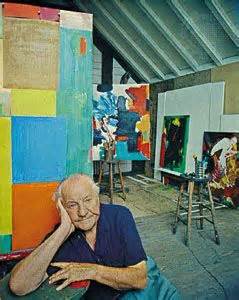
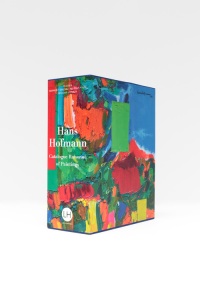


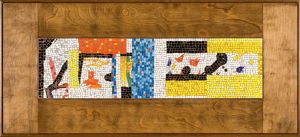
I think this is among the most significant info for me. And i’m glad reading your article. But wanna remark on some general things, The web site style is perfect, the articles is really excellent : D. Good job, cheers
Many thanks!